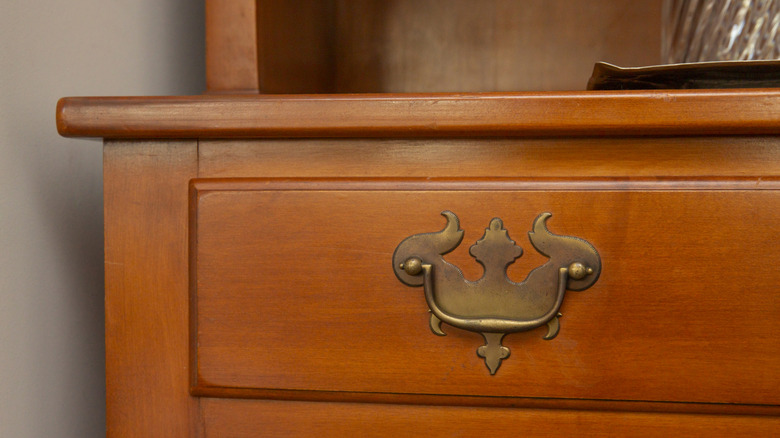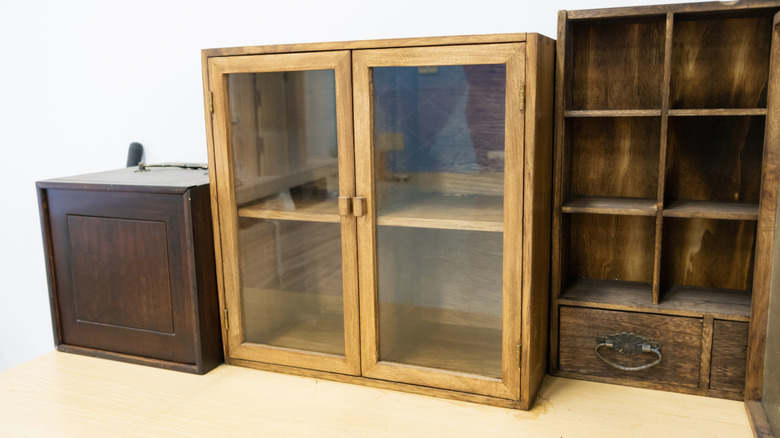Give Your Outdated China Hutch Cabinet New Life By Splitting It In Two
While the 20th century may have been about large and heavy wooden matching dining sets, today's homes often take a lighter approach, with fewer uniformly designed furniture pieces and a mix of both old and new pieces to create multi-layered spaces. This means thrift stores and other secondhand venues are often filled with the outdated cast-offs, particularly large dining room hutches meant to store china and other dishware. These lumbering pieces often offer closed storage below, and open shelves or glass-fronted display cabinets up top. This capacity makes for a large and difficult to move piece that is often too imposing for today's spaces. They are something you may totally overlook or bypass in a thrift store, even if you badly need more storage in your home. There is, however, a great solution to large and ungainly hutches and glass-fronted cabinets. By splitting up the top and bottom of the piece, not only do you get two furniture pieces for the price of one, but the remaining segments are smaller, more functional, and easier to work with, all while providing the same storage in new and stylish ways.
Most hutches can be disassembled with the hardware that originally fastened them together along the back or sides. Some more antique pieces may require a bit of sawing and prying apart where the top and bottom are joined. Once you have separated the hutch's pieces, there are some really clever ways to use the remaining segments in new ways that expand your kitchen storage space and/or offer more discreet storage in the dining room.
How to use the base of the hutch
The bottom of the hutch usually provides drawers and closed cabinets meant to hold items like linens, silverware, and large serving dishes. It can still do this well in today's dining rooms, but the shorter profile can be much more flexible in terms of where you put it in the room, not requiring an entire wall. You also gain valuable display and buffet serving space on top of the piece.
These base pieces can also be used for extra storage space in other rooms like offices and living rooms, as an entertainment or entryway console, or as a changing table with lots of storage inside. Even outdated wood pieces can be sanded and painted or refinished to look fresh and new. You could turn a beautiful antique piece into a bathroom vanity by removing some of the interior framework and installing a sink and necessary plumbing. Or swap out your traditional bar cart with a hutch base for more serving and storage space as a home bar.
How to use the top portion of the hutch
The top, which typically boasts glass doors or wide open shelves, can also be useful in other contexts. Add some simple screw-in legs on the bottom and you have a brand new freestanding cabinet that can be used to display dishes, hold serving ware, or other display items in your dining room. Or, move it into the closet or dressing room to hold shoes or handbags safely, dust-free, and behind the glass. If you want to use the piece for closed storage, consider adding peel-and-stick wallpaper, glass film, or woven material as a pretty touch that blocks what is inside from view. You can also paint or wallpaper the back of the cabinet behind its contents for extra interest.
For open shelf units, turn the top into a bookshelf or stylish pantry storage in your kitchen. You can even place a top segment on top of existing cabinets for a Victorian-built-in hutch look. Another great trick is wall-mounting the top portion above, opening up the top of the lower base as extra counter space.

